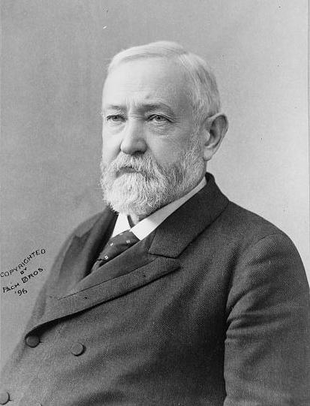The Eleventh Census: Census Day was June 2, 1890.

Authorizing Legislation
An act signed into law March 1, 1889 authorized the census of 1890, which was modeled after the 1880 enumeration.
Enumeration
Because June 1 was a Sunday, the 1890 enumeration began on June 2. The census employed 175 supervisors, with one or more appointed to each state or territory, except Alaska and the Indian Territory. Subdivisions assigned to a single enumerator were not to exceed 4,000 inhabitants. In cities designated by 1880 census results to have populations under 10,000, the enumeration was to be completed within two weeks. Enumerators were required to collect all information required by the act by a personal visit to each dwelling and family.
The 1890 questionnaire retained almost all of the inquiries from the 1880 census, and a few new questions were added. The 1890 census included a greater number of subjects than any previous census and more than would be included in those immediately following. New entries included questions about ownership and indebtedness of farms and homes; the names, as well as units served in, length of service and residences of surviving Union soldiers and sailors and the names of the widows of those who had died. Another new question dealt with race, including “Japanese” as a category for the first time, along with “Chinese,” “Negro,” “mulatto,” “quadroon,” “octoroon,” and “white.”
The population schedule was changed so that a separate sheet was used for each family, irrespective of the number of persons included.
As in 1880, experts and special agents were hired to make special enumerations of manufactures, Indians living within the jurisdiction of the United States, and a separate enumeration of Alaska. Furthermore, the schedule collecting social statistics was withdrawn from enumerators; the work of obtaining statistics concerning mines and mining, fisheries, churches, education, insurance, transportation, and wealth, debt, and taxation, also was conducted by experts and special agents.
For the first time, enumerators were given detailed maps to follow so they could account for every street or road and not stray beyond their assigned boundaries.
Technological Advancement
The 1890 census was notable as the first in which the electric tabulating system, invented by former Census Office employee Herman Hollerith, was used. Tabulation of the 1880 census results took almost a decade to complete, and officials hoped Hollerith’s machine would alleviate delays caused by relying on hand counts and rudimentary tallying machines to process data.
Hollerith’s machine required information from the census questionnaires to be transferred to a card, which was hole-punched at various places to indicate the characteristics – age, sex, color, marital status, etc. – of a person enumerated. The cards were then run through an electronic tabulating machine, which, using metal pins to complete circuits through the punched holes, counted or cross-tabulated different characteristics.
Intercensal Activity
Robert P. Porter served as superintendent of census until his resignation on July 31, 1893. On October 3, 1893, Congress enacted a law that directed census-related work to continue under the direction of the commissioner of labor. On March 2, 1895, a further act of Congress closed the Census Office and transferred the unfinished work to the office of the secretary of the interior, where it continued until July 1, 1897.
Further Information
- A wide variety of historical statistics from this and other decades is available in Historical Statistics of the United States: Colonial Times to 1970. It is available as a PDF [74.4MB] or 2-part ZIP file: Part I [52.2MB] | Part II [66.1MB].
- Reports and statistics from the 1880 Census
- History and Growth of the United States Census: 1790-1890 [PDF 117MB], by Carroll D. Wright and William C. Hunt.
Information provided from Census.gov

